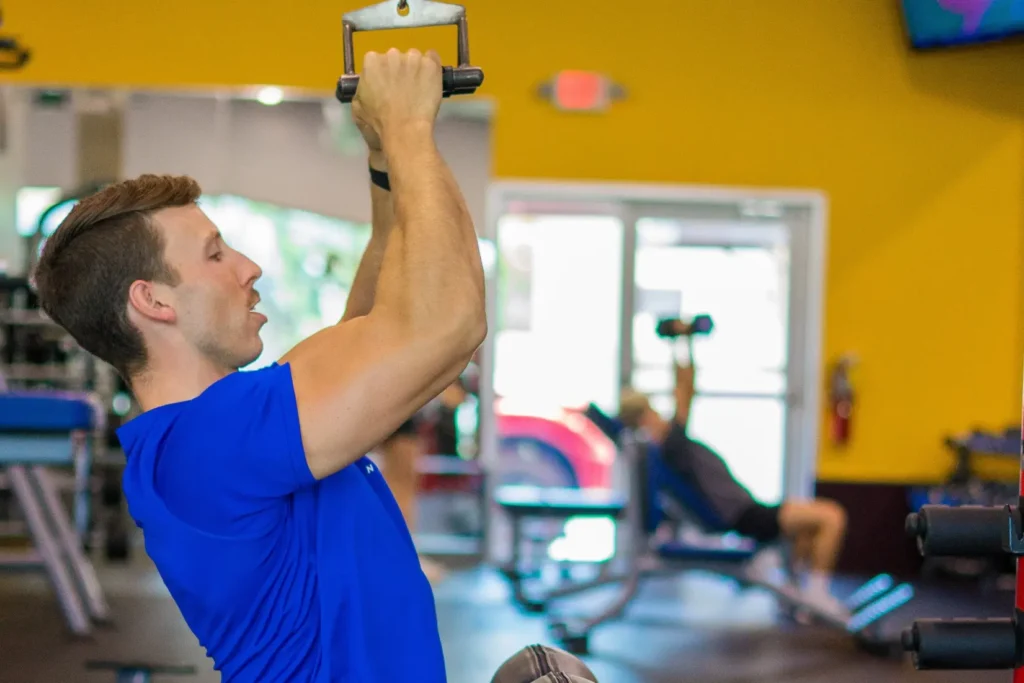Gone are the days when weightlifting was considered a male-dominated activity. Today, women from all walks of life are using weights to sculpt their bodies, boost their metabolism, and enhance their overall well-being.
This guide is designed to debunk myths, provide practical tips, and inspire you to incorporate weight lifting into your fitness routine for effective fat loss and strength gains. Whether you’re a beginner or looking to elevate your existing workout regimen, this guide will help you navigate the path to a stronger, leaner, and more confident you.
The benefits of weight lifting for women
Weightlifting offers a plethora of benefits that extend far beyond mere aesthetic appeal. Here are some compelling reasons why women should consider incorporating weight training into their fitness regime:
- Enhanced fat loss: Muscle burns more calories than fat, even at rest, so by increasing your muscle mass through weight lifting, you’ll boost your metabolism and burn more calories throughout the day.
- Increased strength: Regular weight lifting increases your overall strength, making daily tasks easier and reducing the risk of injury. Stronger muscles support your joints better, leading to improved balance and stability.
- Enhanced mental health: Lifting weights has helped people reduce symptoms of anxiety and depression, improve self-esteem, and boost overall mood. The sense of accomplishment after lifting heavier weights or completing a challenging workout can be incredibly empowering.
- Better body composition: Weight lifting helps in sculpting a toned and defined physique. By reducing body fat and increasing lean muscle mass, you can achieve a more balanced and aesthetically pleasing body shape.
- Breaking stereotypes: By engaging in weightlifting, women challenge societal norms and stereotypes about femininity and strength. It’s a powerful statement of self-empowerment and body autonomy.
Getting started with weightlifting
Embarking on your weightlifting journey can be both exciting and daunting. Here are some essential steps to get you started on the right foot:
- Consult a professional: Before starting any new exercise regimen, it’s advisable to consult with a fitness professional or a personal trainer. They can assess your fitness level, help you set realistic goals, and design a program tailored to your needs. If you are looking for a personal trainer in Brunswick, make sure to visit HiTone Fitness. We will create a detailed workout plan based on your fitness goals and current fitness level.
- Choose the right equipment: Start with lighter weights and gradually increase as you become more comfortable and stronger. Dumbbells, barbells, and resistance machines are great tools for beginners. Ensure you have comfortable, supportive footwear and appropriate workout attire.
- Learn proper form: Proper technique is crucial to prevent injuries and maximize the effectiveness of your workouts. Take the time to learn the correct form for each exercise, and don’t hesitate to ask a trainer for guidance or use online resources for tutorials.
- Start with basic exercises: Begin with foundational movements such as squats, lunges, push-ups, and rows. These exercises target multiple muscle groups and provide a solid base for more advanced training.
- Create a balanced routine: Your workout routine should include exercises that target all major muscle groups, including the chest, back, shoulders, arms, legs, and core. Aim for 2-3 weight lifting sessions per week, allowing for rest days in between to promote muscle recovery.
- Track your progress: Keep a workout journal to track the weights you lift, the number of repetitions and sets, and your overall progress. This will help you stay motivated and adjust your program as needed. Tracking your progress can help you figure out when it’s time for a one-day break. This requires going to gym for a while, of course. Before that, read this article about the suggested frequency of weight-lifting sessions.
Nutrition and recovery
Proper nutrition and recovery are just as important as your workouts when it comes to weight lifting. Here’s how to support your body:
- Fuel your workouts: Consume a balanced diet rich in lean proteins, complex carbohydrates, healthy fats, and plenty of fruits and vegetables. Protein is particularly important for muscle repair and growth, so include sources like chicken, fish, tofu, legumes, and dairy in your meals.
- Stay hydrated: Drink plenty of water before, during, and after your workouts to stay hydrated and support optimal performance.
- Post-workout nutrition: After a weight lifting session, consume a meal or snack that combines protein and carbohydrates to aid in muscle recovery and replenish glycogen stores. A smoothie with protein powder, fruit, and a handful of spinach is a great option.
- Get adequate rest: Allow your muscles time to recover by taking rest days between intense workouts. Aim for 7-9 hours of sleep per night to support overall health and recovery.
- Listen to your body: If you feel overly fatigued or experience pain beyond normal muscle soreness, it may be a sign that you need more rest or should adjust your routine. Always listen to your body and consult a healthcare professional if needed.
Final thoughts
Weight lifting is a powerful tool for women seeking to achieve fat loss, build strength, and enhance their overall health and well-being. By embracing the principles of proper form, balanced nutrition, and adequate recovery, you can unlock the full potential of your fitness journey.





